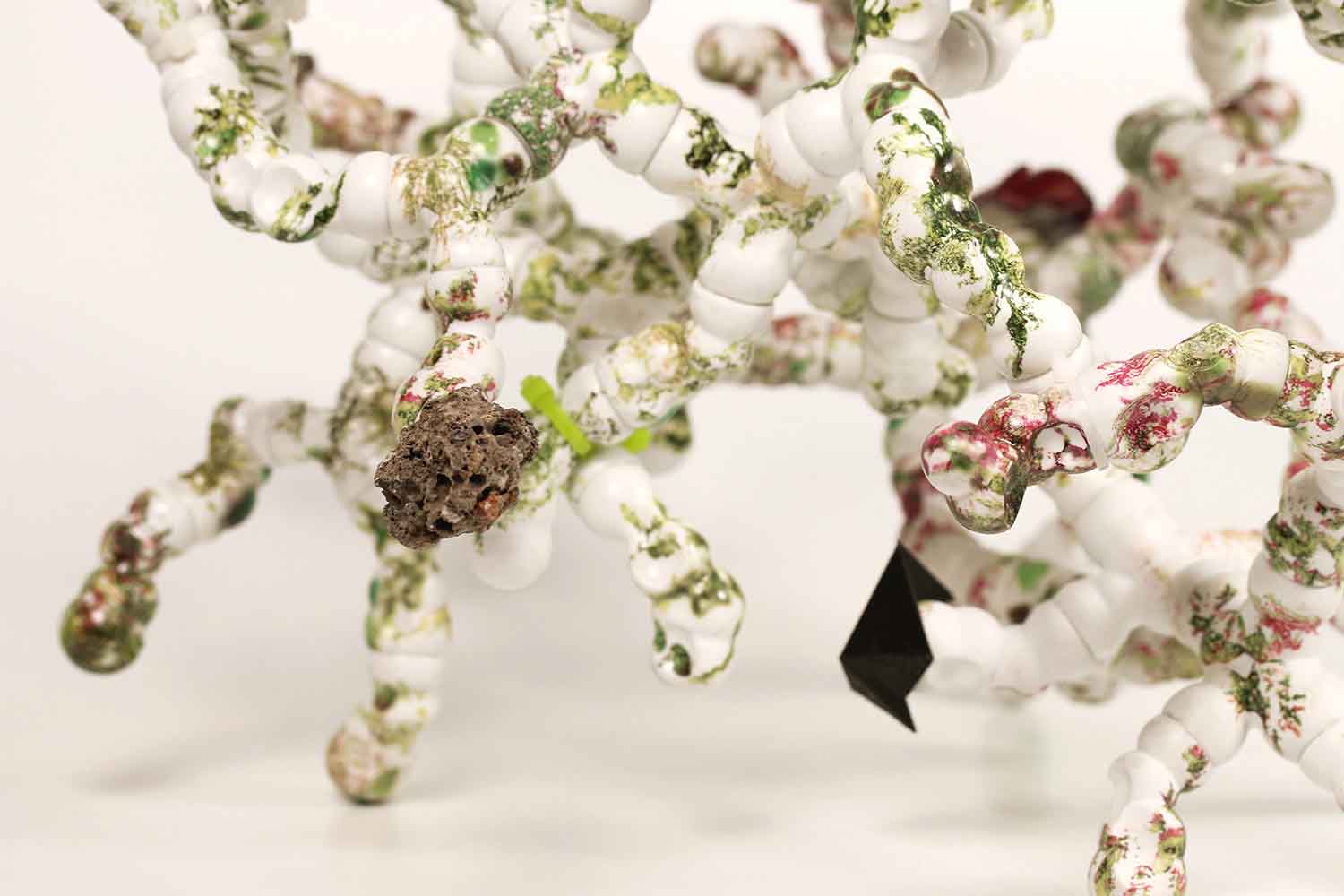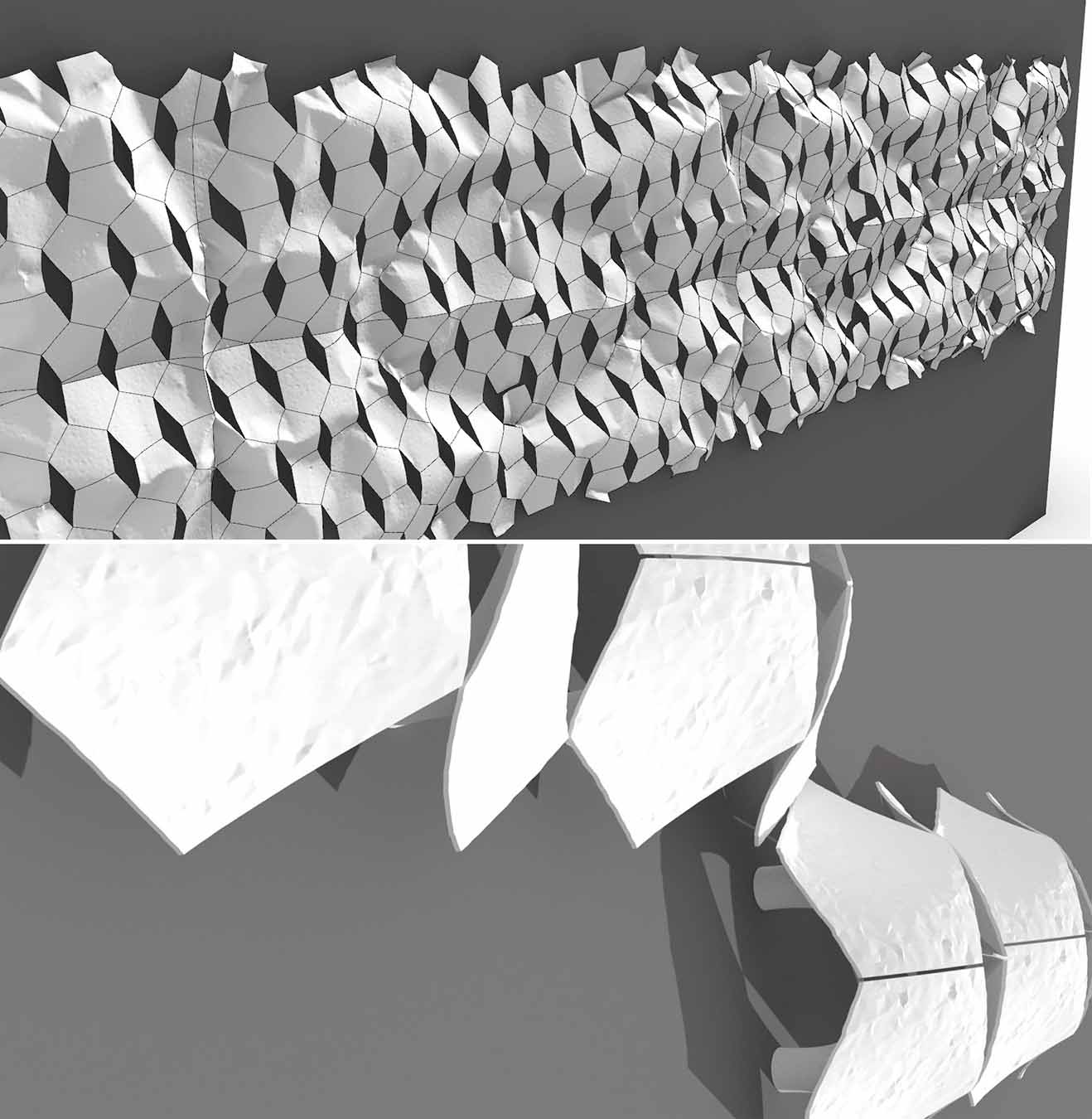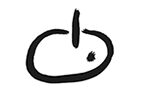Thomas Schmidt, Future Flora, porcelana odlewana, kalkomanie ceramiczne, odłamki ceramiki, PLA drukowane 3D, technika mieszana, 48 x 40 x 46 cm, 2019
Ta rzeźba jest abstrakcyjnym asamblażem, przedstawiającym skomplikowany stan ceramiki w epoce post-cyfrowej: odlewane moduły porcelanowe, produkowane podczas rezydencji w Jingdezhen w Chinach, pochodzą z wydrukowanych modeli 3D, a następnie są składane w splątaną sieć. Dołączony do niestandardowego sprzętu są zabytkowe odłamki ceramiki, ceramika przemysłowa, części drukowane w 3D i różne znalezione przedmioty jako artefakty w tej „obłoce materiałów”. Jako REMIX dekoracji kwiatowych w historii chińskiej porcelany, powierzchnia jest wytwarzana z cyfrowo zmanipulowanych fotografii mchów, porostów i innych roślin w lasach Jingdezhen w Chinach.
Thomas Schmidt, Future Flora, cast Porcelain, ceramic decals, pottery shards, 3D printed PLA, mixed media, 48 x 40 x 46 cm, 2019
This sculpture is an abstract assemblage, representing the complicated state of ceramics in the post-digital age: Cast porcelain modules, produced on residency in Jingdezhen, China, are derived from 3D printed models, then assembled to create a tangled network. Attached with customized hardware are historic pottery shards, industrial ceramics, 3D printed parts and various found objects as artifacts within this “material cloud”. As a REMIX of floral decoration within the history of Chinese porcelain, the surface is produced from digitally manipulated photographs of moss, lichen and other plant-life in the forests of Jingdezhen, China.
Thomas Schmidt, Modułowe studium płytek, renderowanie cyfrowe, 2022
Jest to renderowanie pracy w toku wygenerowane ze skanu 3D zmiętego papieru. Chociaż Thomas Schmidt często używa druku 3D jako narzędzia do tworzenia modeli, ten projekt proponuje druk 3D jako produkt końcowy.
Thomas Schmidt, Modular Tile Study, Digital Rendering, 2022
This is a rendering of a work in progress generated from a 3D scan of crumpled paper. While Thomas Schmidt often uses 3D printing as a model making tool, this design proposes the 3D print as the final product.
Thomas SCHMIDT
Associate Professor | Associate Professor
University of North Carolina at Charlotte | University of North Carolina at Charlotte
Stany Zjednoczone | United States of America, USA
Narzędzia cyfrowe w postcyfrowym krajobrazie | Digital Tools in a Postdigital Landscape
BIO
[PL] Thomas Schmidt uzyskał tytuł licencjata na Loyola University Chicago w 2004 r., świadectwo ukończenia studiów podyplomowych w The School of the Art Institute of Chicago w 2006 r. oraz tytuł magistra w nowojorskim State College of Ceramics na Alfred University w 2009 r. Następnie wykładał przez cztery lata w programie Alfred/CAFA Ceramic Design for Industry w Chińskiej Centralnej Akademii Sztuk Pięknych w Pekinie. W 2012 roku wraz z Jeffreyem Millerem utworzyli zespół projektowy Recycled China, którego prace wykorzystują odpady przemysłowe w Chinach do tworzenia architektonicznych płytek i obiektów rzeźbiarskich. Jego wspólne i indywidualne prace zostały nabyte przez liczne kolekcje, w tym The Daum Museum of Contemporary Art w Sedalia, Missouri, The International Museum of Ceramics w Faenza we Włoszech oraz Victoria and Albert Museum w Londynie. W 2021 r. Schmidt otrzymał Brązową Nagrodę na Międzynarodowym Konkursie Ceramiki w Mino w Japonii za “Notebook Series” [Seria Notatników], w której odtwarza strony zeszytów z odlewu porcelanowego i kalkomanii ceramicznych. Schmidt pracuje obecnie jako profesor nadzwyczajny interdyscyplinarnego studia 3D na Uniwersytecie Karoliny Północnej w Charlotte. W tej roli pomógł stworzyć pierwsze laboratorium Digital Fabrication Lab na Wydziale Sztuki wraz z odpowiednim programem nauczania, który integruje narzędzia cyfrowe z szeregiem tradycyjnych mediów.
Zdjęcia prac Thomasa Schmidta można znaleźć na stronach www.thomasschmidt.org i www.instagram.com/tomschmidtstudio
[ENG] Thomas Schmidt received his BA at Loyola University Chicago in 2004, Post-Baccalaureate Certificate at The School of the Art Institute of Chicago in 2006, and MFA at the New York State College of Ceramics at Alfred University in 2009. Thereafter, he taught for four years at the Alfred/CAFA Ceramic Design for Industry program at the China Central Academy of Fine Arts in Beijing. In 2012 he and partner Jeffrey Miller co-founded the design team Recycled China; whose work uses industrial waste within China to create architectural tile and sculptural objects. His collaborative and solo work has been acquired by numerous collections including The Daum Museum of Contemporary Art in Sedalia, Missouri, The International Museum of Ceramics in Faenza, Italy, and the Victoria and Albert Museum in London. In 2021, Schmidt received the Bronze Prize at the International Ceramics Competition in Mino, Japan for his “Notebook Series” in which he recreates notebook pages in cast porcelain and ceramic decals. Schmidt currently serves as Associate Professor of Interdisciplinary 3D Studio at the University of North Carolina at Charlotte. In this role he helped to establish the Art Department’s first Digital Fabrication Lab along with corresponding curriculum which integrates digital tools with a range of traditional media.
You can find images of Thomas Schmidt’s work at www.thomasschmidt.org
and www.instagram.com/tomschmidtstudio
Abstrakt
[PL] W tym wystąpieniu Thomas Schmidt bada nieustannie zmieniającą się naturę cyfrowej produkcji we współczesnej praktyce studyjnej. Zarówno z perspektywy artysty, jak i pedagoga ewoluująca integracja narzędzi cyfrowych ze sztuką wizualną była przełomowa: skanowanie 3D pozwala nam cyfrowo archiwizować i manipulować wszystkimi formami, od mikroskopijnych po monumentalne. Modelowanie 3D i cyfrowe rzeźbienie pozwalają nam generować i manipulować formami w niespotykany dotąd sposób. A ponieważ powoli zaludniamy wirtualne przestrzenie, jednocześnie opracowujemy potężne i dostępne narzędzia produkcyjne, które przenoszą wirtualne formy do świata fizycznego.
Drukarka 3D jest jednym z tych rewolucyjnych narzędzi, które mogą pełnić różne role we współczesnej praktyce studyjnej: druk 3D pozwala artystom prototypować i powtarzać złożone projekty z różnych materiałów, od plastiku po porcelanę i wiele innych. Mamy możliwość wykorzystania druku 3D do tworzenia konfigurowalnego sprzętu w ramach większych systemów rzeźbiarskich lub do generowania modeli do wykorzystania w bardziej tradycyjnych przepływach pracy, takich jak tworzenie form i techniki traconego wosku. Chociaż te przykłady ukazują wykorzystanie druku 3D jako pośrednika w szeregu metod projektowania i produkcji, istnieją również coraz bardziej udane przykłady, w których wydrukowany obiekt funkcjonuje jako gotowy produkt sam w sobie.
Jednak w ramach tego wachlarza możliwości warto oddalić się i rozpoznać związek między narzędziem a treścią: ponieważ cyfrowe interfejsy i doświadczenia stają się nierozerwalnie związane z każdym aspektem naszego zbiorowego doświadczenia, jak wtedy możemy skalibrować rolę cyfrowego narzędzia w ramach praktyki twórczej? W jakim stopniu użycie tych narzędzi przekracza granicę od narzędzia praktycznego do treści dzieła i w jakim celu?
W tej prezentacji Thomas Schmidt podzieli się licznymi przykładami, które pomogą odróżnić skomplikowaną rolę modelowania 3D i cyfrowej produkcji we współczesnym krajobrazie.
[ENG] In this talk, Thomas Schmidt explores the ever changing nature of digital fabrication within a contemporary studio practice. From both the perspective of artist and educator, the evolving integration of digital tools with visual art has been groundbreaking: 3D scanning allows us to digitally archive and manipulate all range of forms from microscopic to monumental. 3D modeling and digital sculpting allow us to generate and manipulate forms in unprecedented ways. And as we slowly populates virtual spaces, we are simultaneously developing powerful and accessible fabrication tools that bring virtual forms into the physical world.
The 3D printer is one of those revolutionary tools that can serve a variety of roles in a contemporary studio practice: 3D printing allows artists to prototype and iterate complex designs in a variety of materials, from plastic to porcelain among many others. We have the ability to use 3D printing to create customizable hardware within larger sculptural systems, or to generate models to be used towards more traditional workflows such as mold-making and lost-wax techniques. While these examples capture the use of 3D printing as an intermediary for a range of design and production methods, there are also increasingly successful examples of the printed object functioning as the finished product in and of itself.
Yet within this array of possibilities, it may be worthwhile to zoom out and recognize the relationship of the tool versus the content: As digital interfaces and experiences become inextricably linked with every aspect of our collective experience, how then might we calibrate the role of digital tools within a creative practice? To what extent does the use of these tools cross the boundary from practical tool into the content of the artwork, and to what end?
In this presentation Thomas Schmidt will share numerous examples to help tease apart the complicated role of 3D modeling and digital fabrication in the contemporary landscape.





